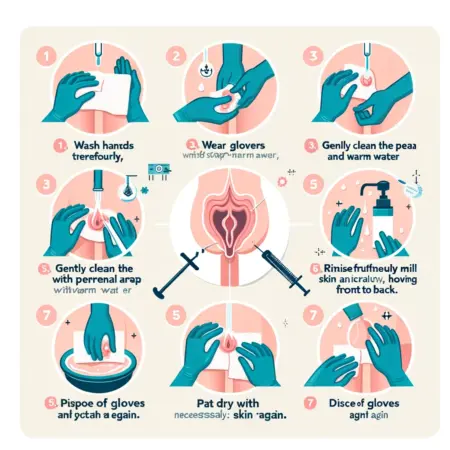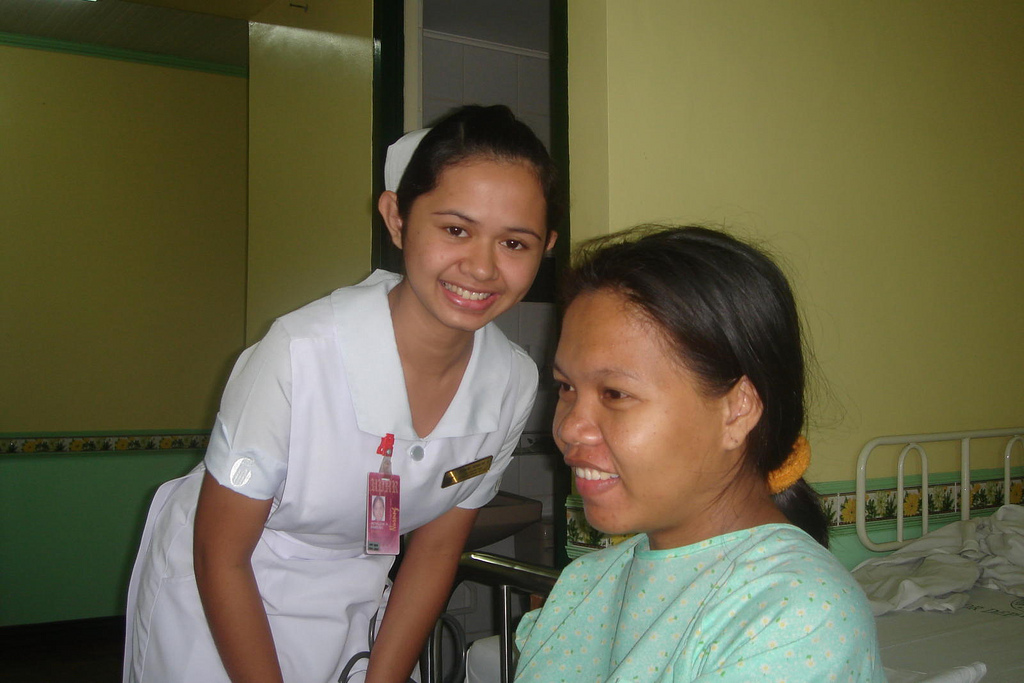Usually perineal care means care of perineum of a female patient. It means cleaning the area, to prevent contamination in an aseptic technique.
Purpose
- To prevent contamination and sepsis (pus formation)
- To clean and remove the discharge.
- To prevent foul smell from the area.
- To assist better and quick healing of wound
Material Required
- Soap and water. 2. Sterile cotton swabs. 3. Tray with a small sterile jug. 4. Warm antiseptic solution, dettol or savlon 1% (1 ml in 100 ml of water). 5. Sterile sanitary pad or napkin. 6. Small sterile forceps or sponge holding forceps to catch cotton swab from jug. 7. Bed pan with cover. 8. Tray or waste receptacle for collection of soiled dressing 9. ‘T* bandage. 10. A piece of mackintosh. 11. Unsterile cotton to wipe patient back. 12. Any medicine or ointment ordered to apply after cleaning. Bed side screen. 14. Good light source or torch. 15. Sheet for covering patient.
What Is The Procedure Of Perineal Care And How To Give Perineal Care To The Patient In Nursing.

- Explain the patient what you are going to do and what for.
- Ask the patient to empty bladder.
- Collect all the materials required on a
- Wash your hands properly with soap and water and wear face mask.
- Put the bed side screen for privacy.
- Ask the patient to lie on her back with her knees flexed and spread out.
- Put the back of the patient on the macintosh.
- Cover the patient with bed sheet and only expose the perineal part.
- Put the bed pan under buttock.
- Remove all old soiled dressings carefully, If dry put some boiled tolerable water to soak for easy removal. Care should be taken while removing dressing sticking to the stitches. Otherwise with forceful removal of dressing from stitches,the stitch may be removed which is a bad
- Observe for any discharge or lochia.
- Test temperature of solution by pouring a drop of two over the genitalia from pubis down towards the vagina and rectum.
- Stand on right side of the patient.
- Now take sterile sponge with a sponge holder and soap it with sterile solution, never dip the sponge in solution.
- Clean the vulva gently from top to down* not from down upwards.
- Use two or three sponge by discarding 1st one and changing one after another.
- Dry with sterile dry “sponges.
- Take care of episiotomy stitches while sponging the stitch area.
- Put sterile pad over vulva.
- Remove bed
- Ask the patient to turn to one side, clean the buttock and back with unsterilized cotton.
- Put‘T* bandage to hold the pad.
- Record the amount and type of vaginal discharge, the condition of perineum and condition of stitches if any.
Points to Note
- Repeat the procedure as per advise of attending obstetrician or gynaecologist, 4 hourly, 6 hourly, 12 hourly or 24 hourly.
- Test temperature of anti-septic solution or hot water.
- Never pour solution/water with force.
- Never try to touch anal area, if the sponge touches, throw It and take a second fresh one.
- Always clean from top to down wards.
Creating a guide for perineal care in a tabular format involves outlining steps in a systematic and easy-to-understand manner. Here’s a basic structure for such a guide:
- Introduction:
- Purpose of Perineal Care: To maintain hygiene, prevent infection, and provide comfort.
- Required Materials: Gloves, mild soap, warm water, washcloths, towels, barrier cream (if needed).
- Procedure Steps:
Step Description 1. Prepare Gather all supplies and perform hand hygiene. Ensure privacy. 2. Positioning Help the patient to a comfortable position that allows access to the perineal area. 3. Wearing Gloves Put on gloves for infection control. 4. Cleaning Use a washcloth with warm water and mild soap. Clean the perineal area gently, front to back. 5. Rinsing Use another washcloth with plain water to rinse the area in the same direction. 6. Drying Pat dry the area gently with a towel to prevent moisture buildup. 7. Applying Barrier Cream If needed, apply barrier cream to prevent skin irritation. 8. Dispose of Supplies Properly dispose of used washcloths and gloves. 9. Hand Hygiene Perform hand hygiene after the procedure. - Post-Procedure Care:
- Ensure the patient is comfortable and re-dressed.
- Monitor for any signs of skin irritation or infection.
- Document the care provided.
- Safety and Comfort Tips:
- Always respect the patient’s privacy and dignity.
- Be gentle to avoid causing discomfort or injury.
- Communicate with the patient throughout the procedure.
- Conclusion:
- Regular perineal care is crucial for patient hygiene and comfort.
- Always follow the guidelines to prevent infection and promote skin integrity.
This guide is a basic outline and may need to be adjusted based on specific patient needs or healthcare settings.
